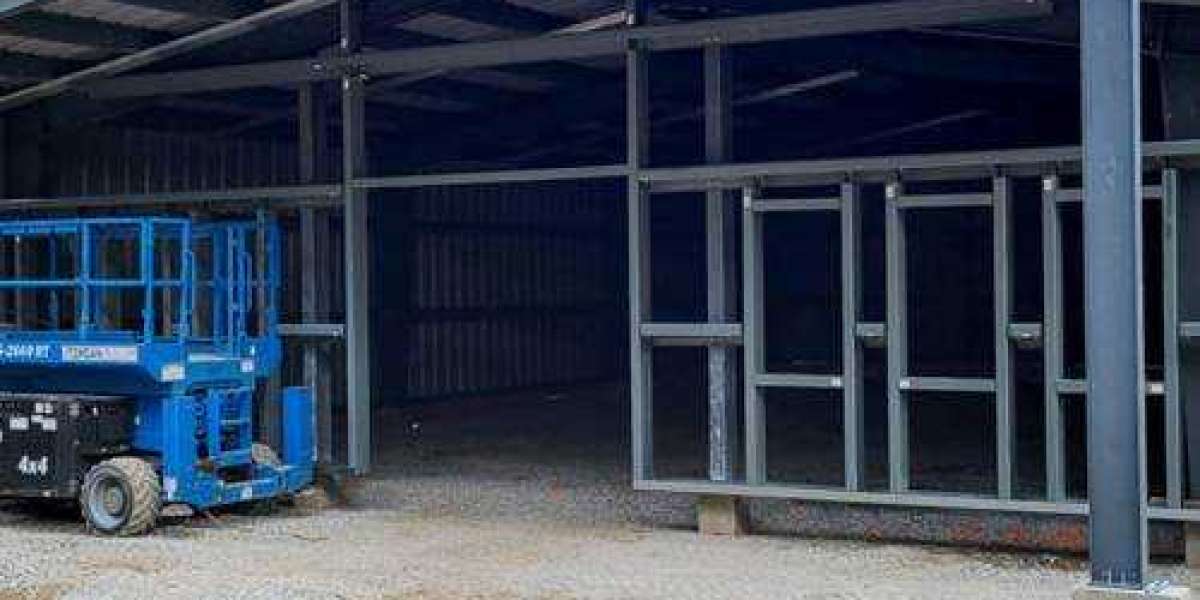Metal structures have become synonymous with strength, durability, and versatility in the realm of construction. From towering skyscrapers to intricate bridges, these structures have reshaped the modern skyline and revolutionized the way buildings and infrastructure are designed and built. In this article, we'll explore the significance, features, and applications of metal structures, showcasing their indispensable role in shaping the built environment.
Understanding Metal Structures
Metal structures encompass a wide range of construction elements and systems constructed primarily from metal materials such as steel, aluminum, and titanium. These structures utilize metals' inherent strength, ductility, and durability to support loads, withstand environmental factors, and provide long-lasting performance. Metal structures can take various forms, including frames, beams, columns, trusses, and panels, depending on the specific application and requirements.
Features of Metal Structures
Strength and Durability
One of the primary features of metal structures is their strength and durability. Metals such as steel are renowned for their high tensile strength and load-bearing capacity, making them ideal materials for supporting heavy loads and resisting structural forces. Additionally, metals are resistant to corrosion, fire, pests, and decay, ensuring long-term performance and structural integrity.
Versatility and Flexibility
Metal structures offer versatility and flexibility in design and construction, allowing architects and engineers to create innovative and complex structures with ease. Metals can be fabricated into various shapes and sizes, enabling the construction of curved, cantilevered, and multi-level structures. Additionally, metal structures can be prefabricated off-site and assembled on-site, reducing construction time and costs.
Sustainability
Metal structures are environmentally friendly and sustainable construction options. Metals such as steel are recyclable materials, meaning they can be reused or repurposed at the end of their lifecycle. Additionally, metal structures can be designed to incorporate energy-efficient features such as insulation, daylighting, and renewable energy systems, reducing energy consumption and carbon emissions over their lifespan.
Aesthetic Appeal
Metal structures offer aesthetic appeal and architectural expression, allowing designers to create visually striking and iconic buildings and landmarks. Metals can be finished in various textures, colors, and coatings to enhance their appearance and complement surrounding environments. Additionally, metals can be combined with other materials such as glass, concrete, and wood to create dynamic and harmonious architectural compositions.
Applications of Metal Structures
Skyscrapers and High-Rise Buildings
Metal structures play a vital role in the construction of skyscrapers and high-rise buildings, providing the strength and stability required to support tall structures. Steel frames, columns, and beams form the backbone of these buildings, allowing for open floor plans, expansive glass facades, and soaring heights.
Bridges and Infrastructure
Metal structures are widely used in the construction of bridges, viaducts, and other infrastructure projects. Steel trusses, girders, and cables provide the structural support necessary to span large distances and withstand heavy traffic loads. Metal structures offer durability, resilience, and ease of maintenance, making them ideal for infrastructure applications.
Industrial Facilities and Warehouses
Metal structures are commonly employed in the construction of industrial facilities, warehouses, and distribution centers. Steel frames and panels provide the structural framework for these buildings, offering large, open interiors for manufacturing, storage, and logistics operations. Metal structures optimize space utilization, streamline workflows, and ensure the efficient operation of industrial facilities.
Architectural Features and Landmarks
Metal structures are often used to create architectural features and landmarks that define cityscapes and landscapes. From iconic skyscrapers and bridges to sculptures and public art installations, metal structures showcase the creativity and ingenuity of designers and engineers. Metals' strength, durability, and versatility allow for the realization of ambitious and awe-inspiring architectural visions.
Conclusion
Metal structures have become indispensable components of the built environment, offering strength, durability, and versatility in construction. From towering skyscrapers to intricate bridges and industrial facilities, metal structures shape our cities, support our infrastructure, and inspire architectural innovation. As technologies evolve and design trends change, metal structures will continue to play a vital role in shaping the future of construction and engineering, leaving a lasting legacy of strength and resilience for generations to come.






